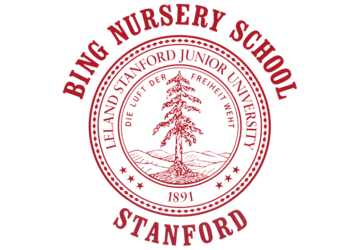
By Parul Chandra, Head Teacher
Equity in early childhood education was a central topic of the 2019 annual conference of the National Association for the Education of Young Children. The conference, held in Nashville in November, also featured talks on a wide range of other topics, including several presented by Bing teachers.
Each year thousands of teachers, program administrators, students and researchers attending the conference choose from hundreds of presentations and exhibits to explore the latest trends and research in the early childhood field. Four Bing teachers were among the attendees. This year was special since NAEYC had recently released a position statement on advancing equity in early childhood education and wanted to use the meeting to gather input from early learning communities and set equity goals for the future. The position statement shares a bold vision in which all children, families, educators and communities thrive. It states: “All children have the right to equitable learning opportunities that help them achieve their full potential as engaged learners and valued members of society.” In practice, equity means all children and families receive necessary supports in a timely fashion, so they can develop their full intellectual, social and physical potential. One can read the statement at http://naeyc.org/equity/.
The opening keynote address by Gail Christopher, former vice president for program strategy at the W.K. Kellogg Foundation and a longtime advocate for racial healing, explored how change is created at individual, community, organizational and systems levels and how each one of us has a part to play in this change. Her session was titled “Overcoming the Belief in the Hierarchy of Human Value: What early childhood educators and parents can do.” Interpreters simultaneously translated the inspiring address into Mandarin and Spanish. Christopher left the attendees motivated to address the need to be aware of equity and celebrate diversity in their classrooms.
I was excited to attend a session dedicated to the late renowned educator and author Vivian Paley called “Teaching for Equity: Legacy of and lessons from Vivian Gussin Paley.” Patricia Cooper, an associate professor in early childhood education at Queens College; Gillian McNamee, a professor of child development at the Erikson Institute; and Christopher, discussed Paley’s signature practices, including her dedicated study of young children’s thinking and reasoning through pretend play, storytelling and story acting activities. They showed how Paley’s 40-year pursuit of fair teaching is revealed through her iconic studies of classroom life and children’s thinking as well as her self-examination of teacher bias around race, gender and developmental difference. Her work also demonstrates her commitment to a classroom environment in which all children’s interests and needs are met and in which kindness and empathy are fundamental principles. Paley’s achievements offer a much-needed roadmap for our profession towards equity, inclusion and the well-being of every child.
In a talk titled “Promoting Effective Communication Strategies: Affirmative guidance for young children’s learning and growth,” Bing head teacher Nandini Bhattacharjya and I presented our work on how to speak with children in order to foster fulfilling interpersonal relationships. These relationships are central to children’s social-emotional development and self-image. Additionally, Mara Beckerman, our music and movement specialist, presented on the power of creative movement. Her session highlighted how focus, spatial awareness, confidence and creativity are valuable outcomes of guided music and movement exploration. [For more information on her presentation, see page 30.]
Alicia Noddings, associate dean of education at Missouri Baptist University, spoke about using sensory integration techniques to improve self-regulation, focus and learning in the classroom. Her talk was very informative and relevant to our work with young children and their diverse developmental needs. Noddings defined sensory processing disorder, where sensory information goes into the brain but does not get organized into appropriate responses. The brains of people with sensory processing challenges have trouble filtering, organizing and interpreting information taken in by the senses. This can cause extreme reactions to sensations like bright light, noises, smells, tastes and textures. The critical piece for appropriate intervention is determining whether attention problems are related to hypersensitivities—when children exhibit extreme sensitivity to particular conditions—or hyposensitivities—when children have a lower than normal sensitivity and thus have problems processing information through their senses. We learned about a variety of sensory-related practices that can help children pay attention, such as cross-lateral integration, core strengthening, climbing and hanging, balancing, swinging, spinning, rocking and the use of fidget devices. Noddings also brainstormed how to use sensory-related tools in our teaching and learning environments.
A session about the powerful potential of project work especially resonated with the Bing teachers since we implement components of this approach in Bing classrooms. Judy Helm, international speaker, author and trainer on project work, documentation and school design, spoke about offering opportunities for all children to engage in project work. In project work, teachers identify a topic of high interest to most members of the class and then facilitate an in-depth study of the topic through firsthand investigation, reflection and representation of their findings. It was motivating to hear about other educators’ experiences with project work. One advantage of this approach is it focuses the student on a big, open-ended question, challenge or problem to research and respond to and/or solve. Other advantages of project work are that it gives children practice at skills such as critical thinking, communication, collaboration and creativity and, most importantly, it builds children’s choice and agency into the learning process. This session affirmed our founding director Edith Dowley’s vision of offering children the freedom of choice in our learning spaces.